Interview: Dirk Dallas of From Where I Drone shares what it takes to create excellent photographs
 |
Anyone can curate photos, but not many have built a successful brand out of it. Dirk Dallas has dedicated thousands of hours to From Where I Drone (FWID), a website and online community that aggregates aerial images from all over the world. FWID has made such a profound impact, with its 266,000 active followers and counting, that Dallas was approached by an established publisher to create a book.
He is also a professor, photographer and ambassador for top brands including PolarPro, an instructor for Adorama TV and a judge for competitions including the Paris Aerial Photography Awards. Dallas credits DPReview for guidance at the start of his journey, saying:
‘DPReview was of the sites I remember always checking when I was going to look up my first camera. I would read all the reviews, there were hi-res photos and I would zoom in to examine more details. You were one of the first sites to feature photos where I could do that and actually see the product clearly.’
We got a chance to catch up and learn more about the steps he took to build a robust online community, his thoughts on what makes a photo stand out in a sea of millions and his new book Eyes Over the World: The Most Spectacular Drone Photography — featuring 20 of his images plus 170 more from 125 aerial photographers seen on FWID. Anyone looking to improve their skills, or simply be inspired, is encouraged to read on.
All slideshow images appear in the book and are shared with permission from Dallas and the publisher.
Tell us a bit more about your background. How did you get started in photography?
 |
Right before I went to college, I was really into video. I wasn’t a great skateboarder but my buddies were. I remember my grandpa had a Hi8 camera and I asked him if I could borrow it to make skate videos. I was using Windows Movie Maker in the process and I loved it.
I never thought of it as a career, though. My parents are all teachers so I thought ‘I’m just going to be a teacher, it’s a safe job. I’ll never have to worry about getting fired, teachers will always be around.’ At the time my girlfriend, who is now my wife, knew I wasn’t really into what I was studying in school. She told me ‘I’d rather have you do something that you love than have a super-safe job that you hate.’
That was a big moment of freedom for me. I didn’t know what my career was going to look like but I knew I was interested in video. I changed schools and started taking an editing class. They handed us cameras, I think I got a Canon XL and started in with that.
Fast-forward to 2007, I got the iPhone when it came out. I remember thinking ‘this thing’s pretty impressive for a camera phone.’ I decided to start taking a picture every day and practice my eye for composition. This was purely for video reasons, not for photography.
 |
| A screenshot of the iPhone photography group Dallas was a part of on Flickr. |
Then I started getting into photography and I uploaded my work to Flickr. That is where I found a community for iPhone Photography which, at the time, was really weird to outsiders. I would share my iPhone shots to other groups and people would tell me ‘that’s not real photography. You’re not using a real camera.’ Our group was definitely niche and we felt like a band of rebels that were trying to push the camera as far as we could.
What’s interesting about that is now it’s not weird at all to take a good photo with your phone. You even see Apple put ‘Shot on iPhone’ on their billboards. But I remember getting made fun of for that on Flickr at first. I got really into photography and that same iPhone Photography community introduced me to Instagram when it first came out. I was one of the first 5,000 users and the community there is what inspired me to keep pursuing photography.
What inspired you to move into aerial photography, particularly drones?
 |
To be honest with you, in 2014 I was getting tired of my photography. I could go to the beach and take a picture of a pier which I’d already done a thousand times. I was getting burned out, losing the spark. The fun disappeared. I knew I needed to mix things up. I remember seeing someone fly a Phantom drone with a GoPro attached to it and was instantly intrigued.
In the 2000s, I was into flying electric helicopters and airplanes. They’re so hard to fly, I’d always crash and barely be able to get any flight time. I’d spend a bunch of time and money fixing them. The drone looked like it was pretty stable and it had a camera on it – two things I enjoy. So I got a Phantom and stuck a GoPro on it. I could now shoot all the spots that I go to and was tired of, like the pier, from a new perspective.
It was a new challenge, especially since the early days of drone photography were so hard. I would set the GoPro on timelapse mode and then guess. I would fly over something and count in my head, because the intervals were 5 seconds and then think ‘all right, I got the shot.’ But I wouldn’t know until I got home and watched the footage from the memory card.
The challenge of something new, combining my two loves, is how I got into aerial photography.
What’s the craziest thing that’s ever happened to you while flying?
 |
In Chicago, I was flying at a park and I remember drones weren’t really common yet. You didn’t really them often. Someone approached me while I was flying and started asking me questions. I’m answering them and in the meantime, they also have a dog that’s running circles around us. I completely lost track of the time and realized that while I’m talking to this guy, my drone’s in the air and about to land any minute.
I start looking for it because it drifted away during the flight. I located it as it’s losing power and going straight into these trees. It gets stuck in one about 30 feet up. I could see it but couldn’t climb the tree to get it. What made the situation even more difficult is that my flight to California was leaving in 4 hours. I’m was quickly running out of time.
I found these guys playing football. I approached them and said ‘guys, I will give you $ 100 if you can help me get my drone down. Maybe we could throw the football at it and knock it out of the tree.’ They looked at me as though I was crazy and one of the guys threw his football at it and misses. They tried for 30 minutes and finally knocked it down. It smashed to the ground but everything ended up still working.
Why did you launch FWID?
 |
In 2014, I started to share my work on Instagram and people were asking how I got these unique (at the time) angles. I would tell them it was from a drone and then they’d ask how they could get one, and so on. I would be helping everyone through messaging and emails. I realized, early on, that the same questions were being asked so maybe I should just start a website. I could send everyone seeking answers to the same questions there.
I couldn’t find anything else like it. No one was really helping people. There were some super-techie questions in there but I’m more creative. Still, I shared tips, and what I was learning along the way with the goal to help people. Then I started sharing stuff from the community.
Before FWID was a website, it was a hashtag – and it was a joke.
Before FWID was a website, it was a hashtag – and it was a joke. There’s that popular hashtag ‘#fromwhereistand,’ and I thought of that except I was taking a photo with a drone. So I tagged it and people immediately got the joke. One day I clicked on it and there were a bunch of photos from people with drones. I realized back then that more people had a drone than I was aware of.
None of my immediate friends were flying drones so it was great for me to see all these people using them and capturing places in ways I’d never seen before. I started an Instagram account for it, just to share photos. That’s where I got all the messages at first and then started the website to point people to for answers.
You’ve created a substantial online presence. Do you have any tips for community building?
 |
Community building is really important to me, in general. I’m also a professor teaching photography, motion design, and graphic design. I spend a lot of time during my semesters building those communities because I’ve seen the value of how it pushes us, functions as a support system, and keeps us accountable.
In some ways that’s translated online. Everybody matters, in my opinion. In the early days, it was so easy to give comments to people, check out feeds, message people, and reply. It would take forever but it mattered to me because there was someone out there reaching out and I would reach back. I think those small gestures went a long way.
One of the things going for FWID is consistency (Dirk took a brief hiatus from posting late last year). I showed up everyday for 2 posts, or a minimum of 1 post, at least, for 4 years. Everybody’s striving for perfection, but it’s not obtainable. I would encourage people to strive for consistency. How are you improving every day?
 |
The fact that FWID showed up almost every single day with something new in the feed made it top-of-mind for a steadily growing audience. Once you know you’ll see it, you come to expect it. People ask me why I post at 9:00 PM every night (PST). I would get my kids to bed, finish our routine. The night was done so then I could post. That’s my habit, that’s my routine.
I spend a lot of time finding photos. My book hadn’t come out yet as I’m telling you this but someone, when they discovered all the photos in there weren’t mine, emailed me and said ‘these aren’t all your photos? Anyone can curate a photo book.’ I had to laugh because I spend so much time seeking out an epic image, something inspiring or unique, something you’ve never seen before. The point is, I put a lot of work into it and don’t post anything random.
There needs to be something of value or people are going to stop showing up. For people reading this, ask yourself ‘what is the value I’m giving people?’ For me, for FWID, the value is inspiration. As soon as that’s lost, FWID will go down. There’s a lot of pressure with that realization.
 |
For example, with Nike, when we think of that logo, it’s actually kind of lame. What makes it so cool is you associate it with Michael Jordan. You associate it with Kobe Bryant. Because those people do amazing things, that’s what makes the brand recognizable. Because the people in the FWID community are incredible, I’m able to share their work and grow.
I’m great at promoting other people’s stuff, by not my own if I’m being honest. It’s not natural to me. Sometimes I feel late to the game or that I should be doing some stuff sooner. This is because I want to help others, that’s my goal. Not everyone’s going to make it onto the feed. And I feel bad because I don’t want to leave anyone out. This is what’s great about Stories. If you tag me with something that’s great, I’ll feature you there and you’ll get tons of views on your work that way.
You have well over 1 million photos to choose from in the FWID community. What is it about a photo that stands out to you enough to make worth featuring?
 |
One of the things I try to do is look for a clear subject. There’s got to be a point, what am I looking at? For example, in the photo below, there’s a person standing next tot the boat and I’m thinking ‘wow, they’re in the middle of nowhere. How did they get there, they’re all alone, and where are they going?’ There’s all these questions that start to pop up.
What they also did is introduce scale. What I’m looking for is some basic photography principles. Scale is one of the biggest things that draws me in. This one (below) interests me because when do you ever see a stadium in the shape of a circle? I’ve never seen one. I always gravitate toward something unique. The lightest part is the tennis court and it’s in the center, so the composition is very focused. The crop is tight.
Pops of color are always a winner. Contrast is always something I look for too. If I click on the #fromwhereidrone hashtag, images that have a color scheme that isn’t blues or greens, something really typical, tend to stand out. Now I want to check it out and see if the image is sharp and crisp. If so, I’ll bookmark it.
 |
I never really see warm, orange-hued photos. These are rare. Everything I see is typically blue, green, and brown. One things a lot of drone pilots forget about is the photography principles. They get so caught up in taking the drone up high that those are an afterthought. The people who get featured and do well, in general, take everything we know about photography on the ground and apply it in the air.
Those are the strongest images to me. A great edit. Light is important for creating atmosphere. If you shot this image (below) 2 hours before, it wouldn’t be interesting. How is this unique? Is there a little bit of fog or does the light come in at the right time? Being mindful of the time of day makes all the difference. The people who will wait for hours until the lighting is just right, who make that extra effort, are striving for excellence.
The top photographers will make more of an effort, most people don’t. It’s your commitment to striving for excellence that separates you from the rest.
You have a new coffee table book out. Tell us more about it.
 |
I’ll start by saying that being able to connect digitally is awesome. I now have friends through FWID from around the world that I wouldn’t have otherwise known. That said, we’ve lost this sense of touch and tangibility. What I set out to do is put together some of the best photos at the time of when this book started, back in Summer of 2018, put it in your hands, and inspire you.
I’ve seen these photos on the feeds, I’ve looked at them on my computer, in InDesign, and in drafts and proofs. Once I actually touched and held the book, it was magical. What this book does, I believe, is inspire. Right now we’re in lockdown so it feels like a little vacation, a little trip around the world. It’s a bucket list that makes you think ‘I want to go there when this pandemic is done. I want to shoot that place.’
Once I actually touched and held the book, it was magical. What this book does, I believe, is inspire.
The beautiful thing about FWID is the community. I would have never met or known about all these amazing photographers if it wasn’t for an app (Instagram).
The beautiful thing about FWID is the community. I would have never met or known about all these amazing photographers if it wasn’t for an app (Instagram). What this book represents is a community, people with a shared vision. Now the FWID community has something tangible and lasting. I could delete a photo, close the account, go dark, but the book is out. It will live on, it’s an artifact that will be in the world forever.
When I’m on Instagram or anywhere else online, I may like a photo, but I’ll take it in for half a second. As an author and a curator, I’ve had to pause with these photos and really take them in, ponder in that moment. Those are some feelings I didn’t expect, to be honest.
There have already been quite a few drone and aerial photography books released — What makes yours stand out?
 |
For me, it represents the community. I looked at thousands and thousands of photos that I curated over the years and painstakingly whittled it down to what I thought were the best, most unique images. There are some books that put an image in simply because it’s a drone shot. With this book, I considered the question of ‘why does this shot deserve to be included?’
The book is broken down into 5 categories (Water, Arid, Lush, Urban, and Ice). At the beginning of each category, I wrote photography tips – it’s called ‘Photography Insights.’ For Arid, for example, ‘with extreme temperatures, blowing sand, and broad expanses of land and sky, these landscapes provide challenges to photographers. The drone pilot should be prepared to protect their gear from the elements while being persistently observant. These environments are often devoid of life. It’s crucial to scan the area for compelling subjects to tell a story and give context to a location.’
I give some examples of what you should look for, how to think of capturing lines and curves. I also give some insights on shooting in different climates but I want to make it clear that this is not the focus of the book. Another thing, and I think this makes the book unique, but I’m not entirely sure, is that all 7 continents are represented – including Antarctica.
Were you approached by a publisher or did you pitch this book?
 |
I had been asked 2 times in the past to do a book but I either didn’t know the publisher or it seemed like they were trying to make a buck. Then I got approached by Rizzoli and it just so happened that 3 weeks after I got an email from them, I was going to be in New York where they have an office. I asked if I could meet with them.
My whole motivation for FWID is not to get rich but if I’m going to do something, it has to be done well. I really want it to be something that I can be proud of and can put my name on. COVID has caused some delays. I got my first copy of the book a few weeks ago, even though it was completed in February. That’s not normal. I should have gotten it back then, when it was printed.
I couldn’t start promoting a book until I saw it and held it. It needs to be good. If it’s not, I won’t promote it. I looked at Rizzoli’s work, they produce beautiful books and my editor was really awesome. The collaboration started through an email from them and we decided to collaborate from there.
What photography and drone gear to you use the most?
 |
Drone-wise, I’m shooting a ton with my (DJI) Mavic 2 Pro. I love how small it is, how quick it boots up. That’s a huge thing, it boots up so fast. I also love how quiet it is, that’s a bonus. My next drone that I use is my Phantom 4, but that’s only when I don’t have my phone charged. I hate that I have to use my phone. I know DJI has a Smart Controller but it’s $ 800. I don’t know how I can justify purchasing one.
I use my phone and I hate it on the Mavic so if the phone’s not juiced, I bring my Phantom 4 with a tablet. Also, if I’m shooting during the day, a larger screen is better. For regular photography, I shoot with a Canon 5D Mark IV.
Who are the artists that inspire you the most?
 |
I’m blown away by the work of Costas Spathis. He finds the most unique places, and I ask myself ‘where does this even exist on Earth and how does he find it?’ Another is George Steinmetz. I remember seeing his camel photos for the first time, and I was blown away. The subject wasn’t the camels, it was their shadows and that’s what made me realize what was possible with aerial photography.
Chris Burkard, who did the forward for this book, inspired me years ago when I saw his photos of surfers in the snow. I had never seen anything like that in my life. He challenged me to go for those unexpected moments like people surfing in frigid temperatures around Iceland.
Those are the photographers who have shown me to look at the world in a different way, and to think differently. On a non-photography level, I’m really inspired by Van Gogh. As I continue to learn about his use of symbolism, it becomes clear that for him it’s more than just a painting. Everything had meaning, and you can tell he put so much thought into every decision he made when creating. It makes me want to do things with purpose and excellence.
What tips do you have for people starting out in photography or are looking to improve their skills?
 |
My biggest recommendation is consistency and discipline. So many people think FWID just happened or a print that wins an award or gets featured somewhere big just automatically happens instead of being the result of a lot of work, time, and effort. It takes a lot of failures before you get to a certain level.
One of the things I miss about being a newbie is not caring. I would create something and put it out there. I wouldn’t care because I didn’t know any better. Now that’s disappeared a little bit. I’m cautious, and I ask myself if something is worth sharing or not. It’s good in some ways, bad in others.
If people want to get better, but you don’t have a plan, how are you going to accomplish that? You’re going to be like all those people who make New Year’s resolutions and then a week later, nothing comes out of it.
The point is, when I started taking pictures with my phone, I didn’t care if it was a good photo. I was practicing. I was showing up every day in a discipline, I was in a habit. I made the thing I wanted to get good at a habit. If people want to get better, but you don’t have a plan, how are you going to accomplish that? You’re going to be like all those people who make New Year’s resolutions and then a week later, nothing comes out of it.
You have to be disciplined. You have to have habits. For me, consistency is the biggest factor. Show up, even on the days when you don’t want to, even when you’re tired. Figure out a discipline. For me, that was a photo every day. I don’t know what that means for someone else. The point is, I had a plan and I saw it through.
Articles: Digital Photography Review (dpreview.com)
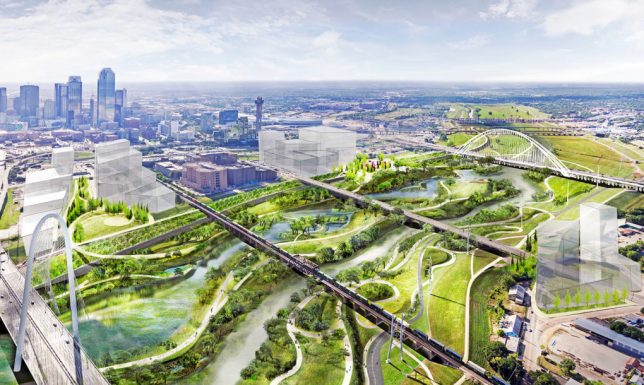
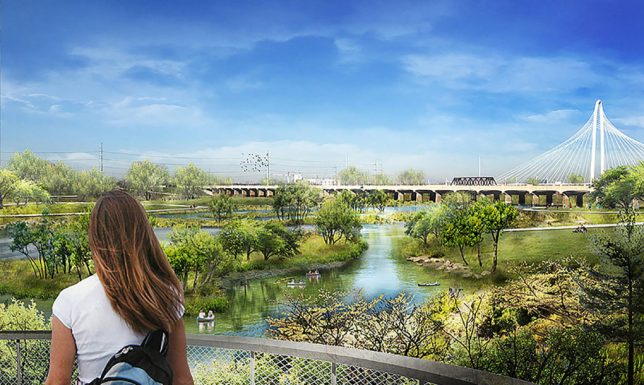
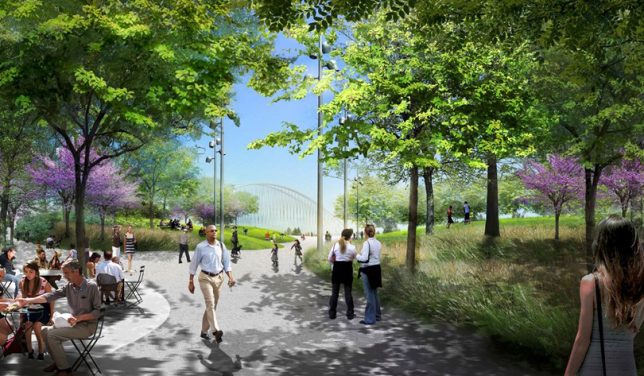
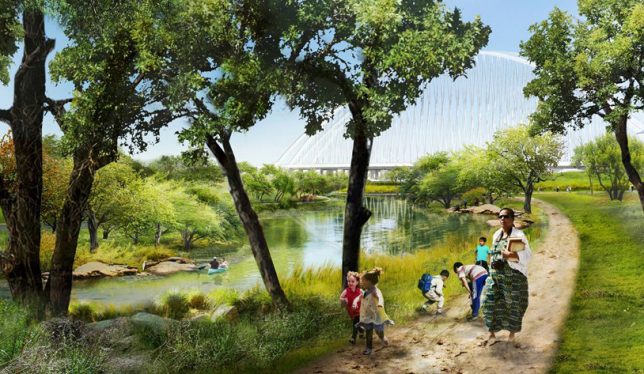
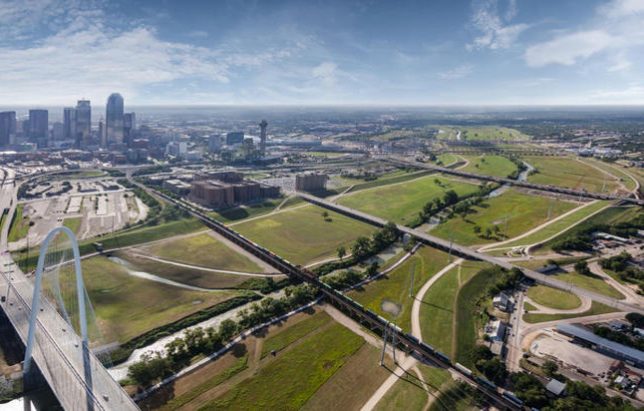
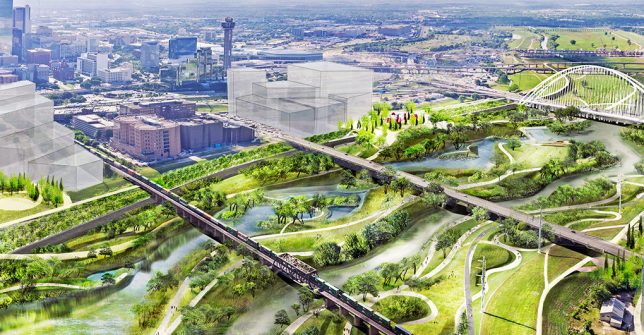




You must be logged in to post a comment.